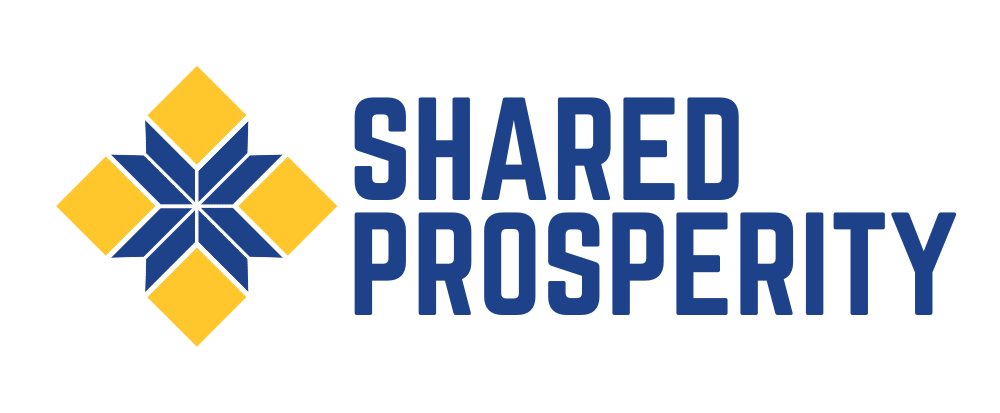Manifesting Shared Prosperity for Economic Democracy
An invitation to prove that work can once again generate wealth
At the core of the American Dream lies the belief in self-determination. For generations, this promise was simple: work hard, play by the rules, go to school, and a job would lead to homeownership, stability, and opportunity for your children.
That pathway is now broken. Wages have stagnated while the real costs of survival from housing, healthcare, education, energy, to groceries continue to climb. Millions of families live paycheck to paycheck, renters paying someone else’s mortgage instead of building equity. Prosperity today is determined less by labor than by capital. Without ownership of appreciating assets—real estate, equity stakes, or businesses—most Americans cannot maintain stability, let alone build generational wealth.
Without ownership of appreciating assets—real estate, equity stakes, or businesses—most Americans cannot maintain stability, let alone build generational wealth.
Economist Thomas Piketty captured the imbalance in a simple formula: r > g. The rate of return on capital consistently outpaces economic growth and wage increases. This structural bias means that wealth naturally concentrates in the hands of asset owners, while wage earners fall further behind.
Technology is magnifying the divide. Artificial intelligence is not creating a new paradigm, it is intensifying the one we already have. AI automates both physical and cognitive tasks, driving wealth to those who own the platforms, infrastructure, and data. The gains accrue to capital holders, not to the workers who train, sustain, and depend on these systems.
This is not only an economic failure; it is a democratic one. Ownership has always conferred agency. Universal suffrage in law is hollow if the majority is excluded from meaningful participation in wealth creation. Without a personal stake in the economy, civic voice is detached from real power. Democracy is only possible when citizens have the financial independence to participate. As John Jay observed, “Those who own the country ought to govern it.” Political freedom is limited without economic freedom.
For nearly a century, redistribution through safety nets helped stabilize a society built on a high degree of economic inequality. Programs like Social Security, Medicare, and subsidies caught families when markets failed to meet basic needs. But redistribution is reaching its limits. The Social Security Trust Fund is projected to be partially insolvent within a decade. Healthcare, housing, and education costs continue to outpace wages, forcing families into deeper reliance on public programs already overstretched. Redistribution treats symptoms; it does not fix causes.
We need a new approach: predistribution. Instead of waiting to fix inequality after the fact, we embed ownership into the system from the beginning.
We need a new approach: predistribution. Instead of waiting to fix inequality after the fact, we embed ownership into the system from the beginning. Instead of paying rent, tuition, or medical bills into someone else’s pocket, families would build equity with every payment. Costs become assets. Burdens become engines of wealth.
This is the vision behind the Shared Prosperity Model. It is not a manifesto. It is a structural redesign of capitalism itself, combining the discipline of markets with the broad distribution of ownership needed to sustain democracy.
The Shared Prosperity Model integrates proven tools from private equity roll-ups, Employee Stock Ownership Plans (ESOPs), cooperative shared service structures, and Louis Kelso’s idea of “universal capitalism.” On their own, each tool has limits. Together, they coalesce into a new system built with these underlying principles.
Predistribution instead of redistribution. Ownership from the start, not after inequality calcifies.
Aggregation without extraction. Fragmented small businesses rolled into community corporations that keep wealth local.
Capital that pays for itself. Future savings and enterprise profits repay upfront investments, without burdening workers with debt.
Flywheel logic. Every acquisition and liquidity event strengthens the system, compounding wealth and expanding ownership.
This model proposes a new generation of worker-owned corporations that can contract with hospitals, retrofit homes for energy efficiency, or manage real estate in disinvested corridors so that community residents benefit from revitalization. Each community corporation becomes part of a federated network that grows stronger with every turn of the flywheel.
The stakes are clear. If ownership remains concentrated, inequality will deepen, democracy will erode, and economic populism will feed instability. But if we embed ownership, broaden access to capital, and align markets with community well-being, we can flip the script.
This Substack will help us workshop this vision. Here we will share frameworks, field notes, and stories of pilots in motion. We’re not asking for passive endorsement. We’re inviting co-builders: entrepreneurs, funders, policymakers, and readers who believe the American Dream must be redefined for the 21st century.
The invitation is simple: help us prove that work can once again generate wealth, that communities can own the engines of their survival, and that democracy can be renewed through dignity, agency, and hope. Welcome to Shared Prosperity.


